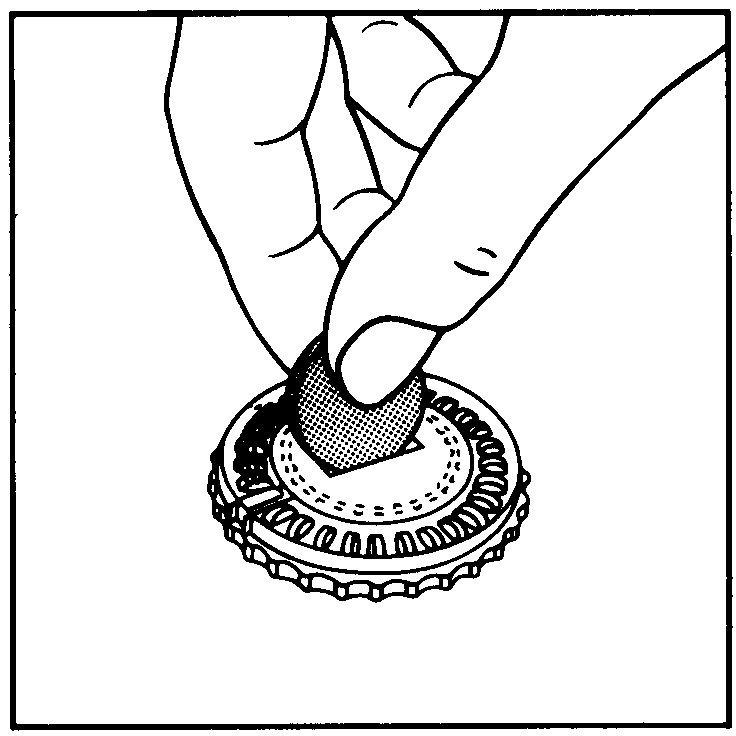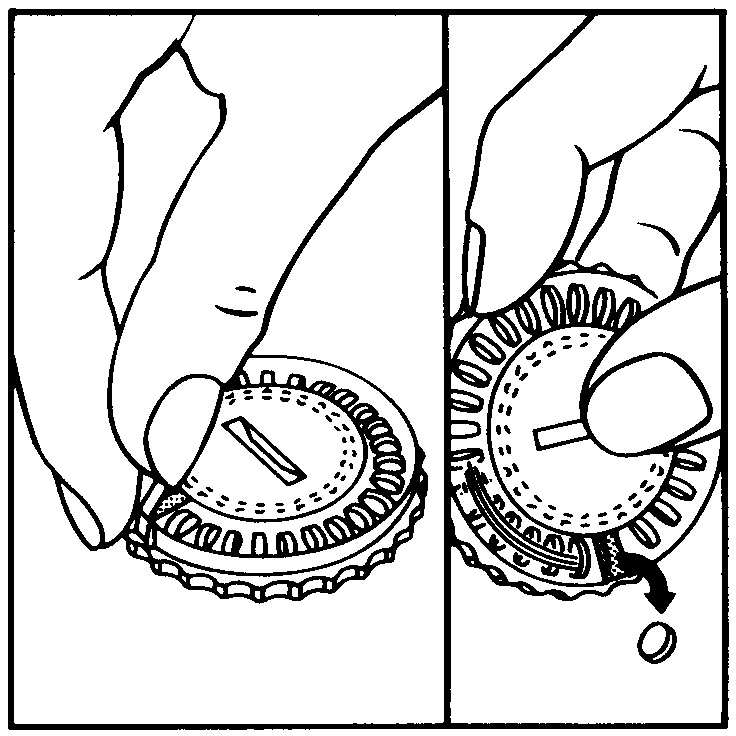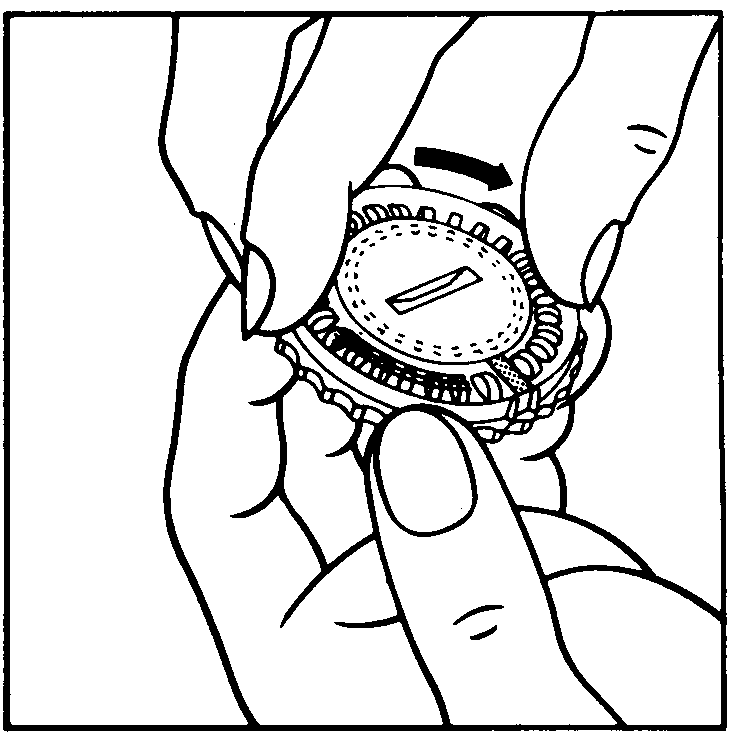|
Trisequens
Cyclically-opposed HRT
Please read the whole leaflet carefully before you start to take your Trisequens.
What's in your medicine
Trisequens is supplied in a calendar dial pack of 28 tablets; 12 blue tablets, 10 white tablets and 6 red tablets.
Cartons containing 3 calendar packs are available.
The blue tablets each contain 2 milligrams of Estradiol (as hemihydrate) and 1 milligram of Estriol. These ingredients are both oestrogens.
The white tablets each contain 2 milligrams of Estradiol (as hemihydrate) and 1 milligram of Estriol plus 1 milligram of norethisterone acetate (a progestogen).
The red tablets each contain 1 milligram of Estradiol (as hemihydrate) and 0.5 milligram of Estriol.
The tablets also contain lactose, maize starch gelatin, talc, magnesium stearate, triacetin, E464 E171, E172, E132 and propylene glycol. The tablets do not contain any significant amounts of gluten. Trisequens is one of a group of hormone replacement therapies called cyclically-opposed HRT.
Product licence holder and manufacturer: Novo Nordisk A/S, Novo Allé, DK-2880 Bagsvaerd, Denmark.
About Trisequens and hormone replacement therapy
Your doctor has prescribed Trisequens to relieve the unpleasant symptoms (such as hot flushes) which occur in many women around the time of the menopause. Trisequens may also have been prescribed to prevent the bone loss which can occur after this time, and which in some women can lead to fractures of the wrist, spine or hip in later life.
Important questions before taking Trisequens
Have you had cancer of the breast or endometrium (lining of the womb)?
Have you had any other cancer which may have been sensitive to oestrogens?
Do you have or are you being treated for phlebitis (inflamed veins), DVT (deep vein thrombosis), blood clots in the lung, or stroke?
Have you recently had any vaginal bleeding, other than during a period?
Do you suffer from liver problems, for example jaundice?
Do you suffer from heart or kidney disease?
Are you being treated with any lipid lowering drugs?
In any previous pregnancy did you suffer from severe itching, herpes, otosclerosis (loss of hearing) or jaundice?
Are you pregnant?
Are you allergic to any of the constituents? (These are listed above)
If you have answered Yes to any of these questions tell your doctor or pharmacist before starting Trisequens.
Precautions
Trisequens must be stopped at once if you become pregnant.
Ask your doctor for advice on whether you should stop taking the tablets if you need an operation or if you are confined to bed for a long time.
Your doctor will measure your blood pressure and carry out gynaecological and breast examinations at regular intervals, as appropriate for you.
It has been established that taking oestrogens alone increases the risk of endometrial cancer (cancer of the lining of the womb). Taking a progestogen in addition to the oestrogen lowers the additional risk.
Fibroids of the womb may increase in size during treatment. Tell your doctor if you notice any abdominal swelling whilst you are taking Trisequens.
There has been concern about the possible risk of breast cancer with oestrogen treatment. Many studies have not shown any increase in breast cancer, but some have shown a small increase after prolonged |
treatment (5 years or longer). During treatment with Trisequens you should regularly self-examine your breasts. Your doctor will advise you if you need regular mammography; this may be necessary if you have, or have had, breast nodules or fibrocystic disease.
The risk of thrombosis (blood clots) is not known to be increased during treatment with Trisequens. However if a blood clot occurs during treatment, Trisequens should be stopped. You should stop taking the tablets and see your doctor if you experience any of the following: unusually severe or frequent headaches sudden visual disturbance, inflamed veins pain in the chest, swelling in the legs or arms breathlessness, pain on breathing.
You should stop taking Trisequens if you develop jaundice during treatment.
Trisequens has little effect on blood pressure. If you have had blood pressure before starting Trisequens you r doctor may want to measure your blood pressure more frequently. If you develop high blood pressure after starting taking Trisequens you should stop taking the tablets.
If you have a blood test remember to tell the doctor that you are taking Trisequens, since it may affect the result.
Trisequens and other diseases
Certain diseases are known to sometimes worsen during HRT and this can occasionally happen during treatment with Trisequens. If you suffer from heart or kidney disease, you will need more careful monitoring and your doctor will wish to see you more frequently.
If you have diabetes, your diabetic control may alter when you first start Trisequens - monitor your blood glucose more frequently during this time.
Contraception
It is important to note that Trisequens is not an oral contraceptive. If you are taking non-hormonal contraceptive precautions when you start Trisequens, you should continue to do so until your doctor tells you that contraceptive precautions are no longer required. If you have been taking a hormonal contraceptive (i.e. the pill or depot injections) you must change to a non-hormonal form of contraception before starting Trisequens.
If your doctor has already told you that you no longer need to take contraceptive precautions you need not do so whilst taking Trisequens.
Taking other medicines
If required other medicines can be taken together with Trisequens. However other oestrogen products should not be used unless prescribed by the same doctor specifically to be used with Trisequens. Remind your doctor if you are taking or start to take antidepressant drugs, or drugs for the treatment of epilepsy, since additional precautions may be necessary.
Taking mineral oil (liquid paraffin) with Trisequens may reduce its effect.
Taking your Trisequens
If you are still having periods take the first tablet on the fifth day of your period, whether your period has stopped or not. If your periods have stopped or become infrequent, the tablets can be started straight away; your doctor will let you know if this is the case.
Take one tablet a day, preferably at about the same time. Swallow the tablet with a glass of water. Begin by taking the blue tablets for 12 days followed by the white tablets for 10 days and finally the red tablets for 6 days.
Overdosage
The signs of overdosage are nausea and vomiting. Apart from treating these symptoms no other action
is necessary. continued |


